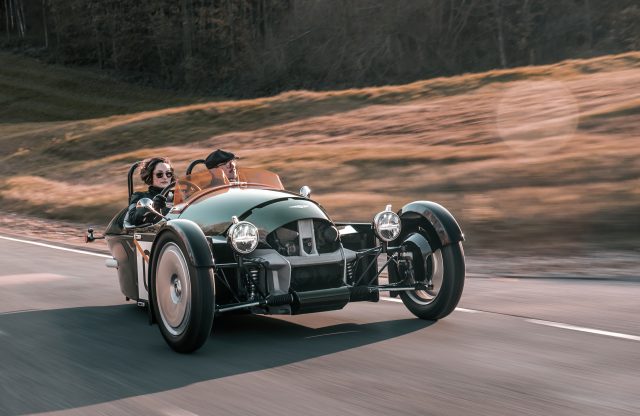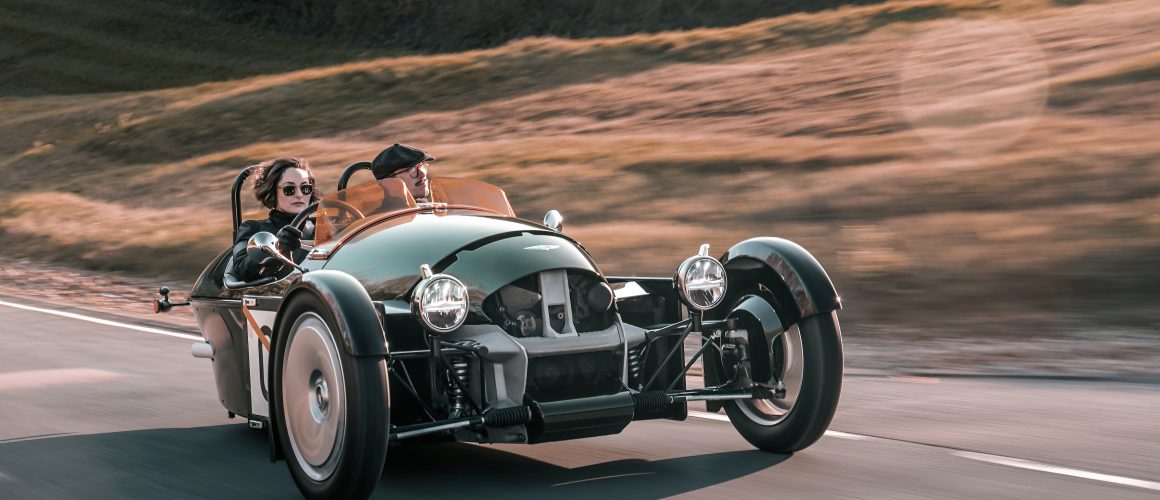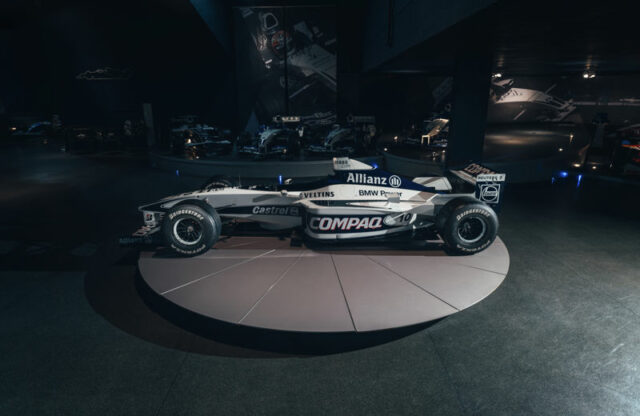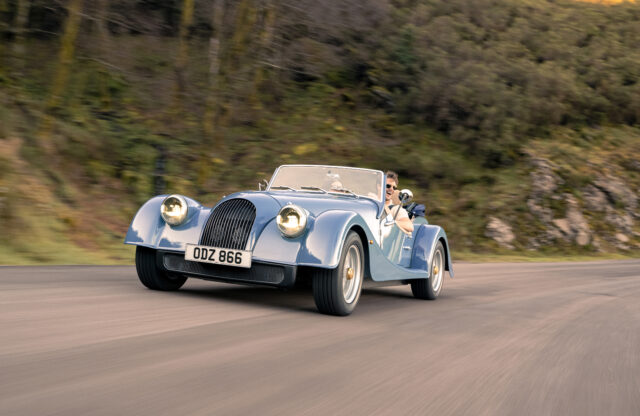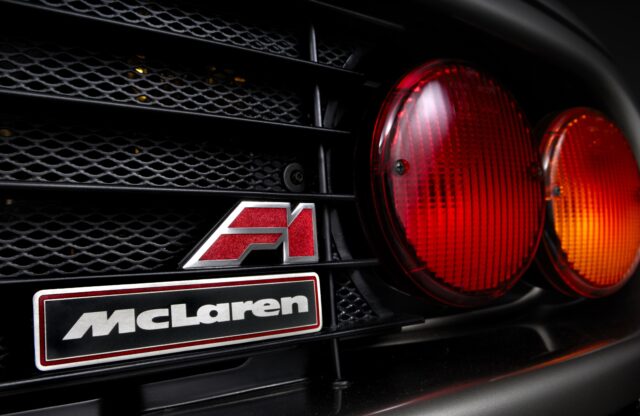WORDS: ELLIOTT HUGHES | PHOTOGRAPHY: morgan
Morgan Motor Company has unveiled its next-generation 3 Wheeler. The latest model is called the Super 3, and it arrives ten years to the day since Malvern shocked the world with the announcement of the model’s revival back in 2011 – the blink of an eye by Morgan’s standards. Customer deliveries are scheduled to begin in July 2022.
The reason Morgan has been so uncharacteristically eager to introduce the Super 3 is two-fold. Firstly, the 3 Wheeler’s characterful S&S-built V-twin has fallen foul of emissions legislation and can’t be homologated for the future. Secondly, it was wildly successful, with Malvern producing more than 2500 examples since the 3 Wheeler was reintroduced back in 2011 – a considerable number for a marque that builds 400-600 cars per annum.
Consequently, the Super 3 is Morgan’s first clean-sheet visual design since the arrival of the curvaceous Aero 8 in 2000, pairing a sleeker, jet-age-inspired design language with the car’s more modern powertrain and super-formed aluminium monocoque construction.
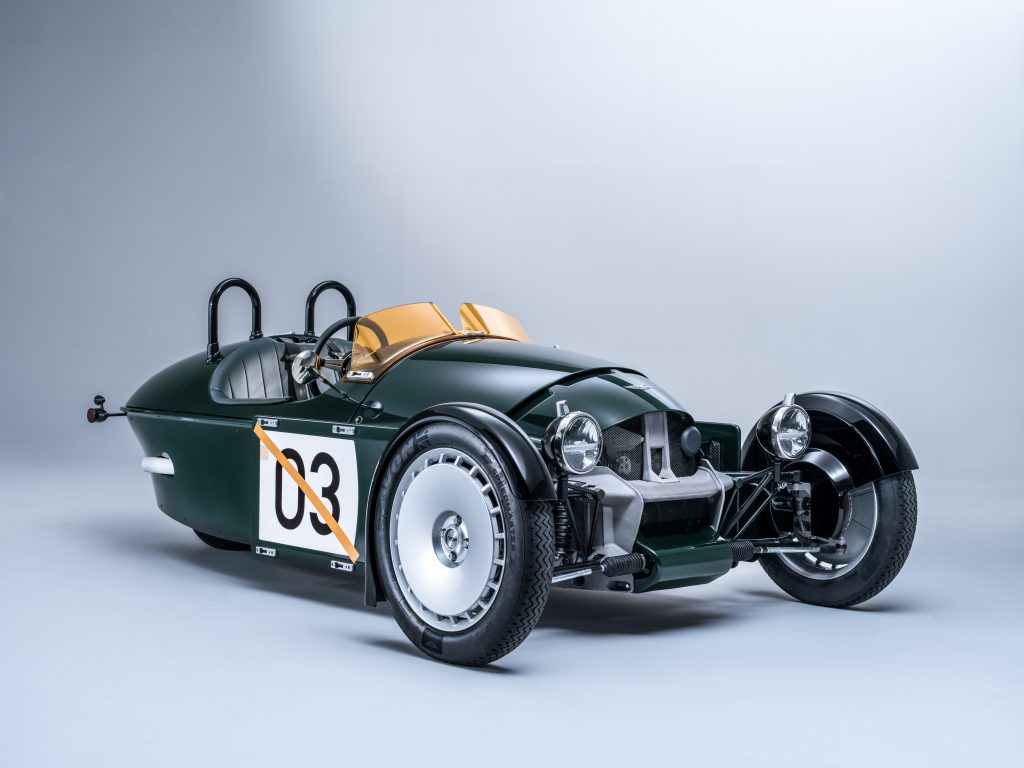
“It felt natural to derive influences for the Super 3 from the succeeding decades its 1920s-inspired predecessor was paying homage to,” explains design head Jonathan Wells. “During the jet age, the balance of form vs function was equalised. It was within these decades that the most aerodynamic forms were not only required, but also admired.”
Unfortunately, the Super 3 isn’t fitted with a jet engine. Instead, Morgan has selected a naturally aspirated 1.5-litre inline three-cylinder from Ford. It produces 118bhp and 110lb ft of torque, which means 0-62mph takes around seven seconds and top speed is reached at 130mph. The Super 3 retains the crisp Mazda MX-5 five-speed manual transmission and rear-wheel drive.
Morgan has looked to strengthen previous weaknesses in the drivetrain by re-engineering the Super 3 bevel box with bespoke teeth that drive a reinforced carbonfibre drivebelt. Additionally, the previous car’s driveline compensator has also been removed. The new engine will provide a new driving experience that is smoother and more happy to rev than the growling V-twin powerplant. Morgan has looked to enhance the inline-three’s character by tuning the sound for a raspy mid-range that climbs to a sonorous crescendo as the revs increase.
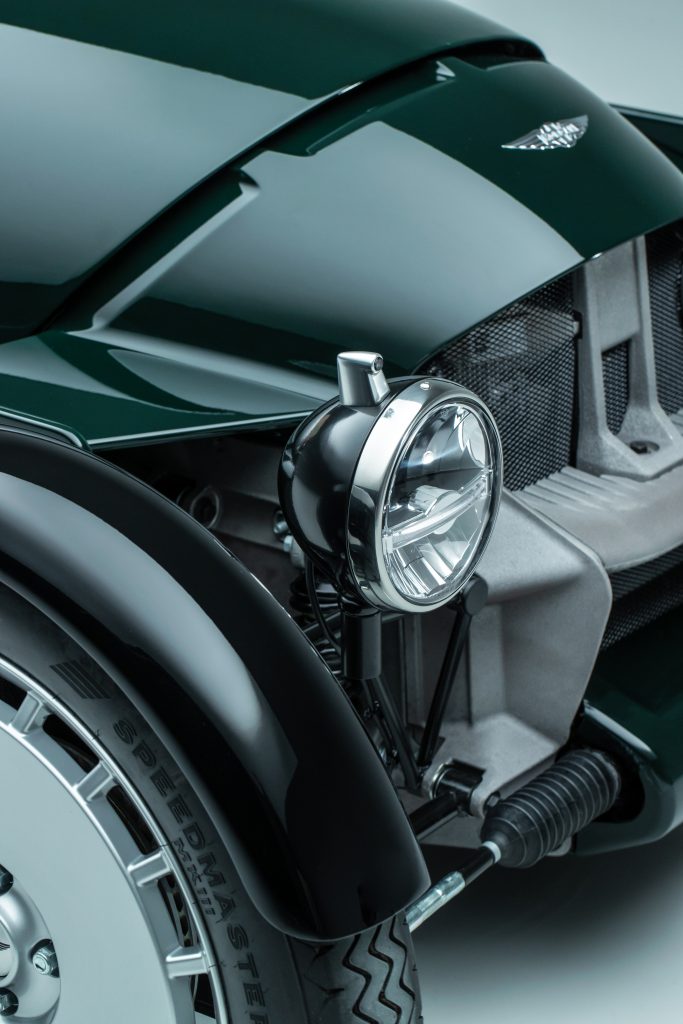
However, the most dramatic alteration to the drivetrain is the engine’s new inboard position, sitting behind the front wheels for a more balanced front-mid-engine layout. This sounds promising from a dynamic perspective, but the new car is also 85kg heavier (635kg total) than the previous generation.
The relocated engine has facilitated much of the Super 3’s distinctive exterior design details. The car’s face is now characterised by exposed aluminium structural casting, suspension components on a larger horseshoe cowl and Sideblade radiator inlets. The Sideblades can have a variety of accessories fitted, from the broad selection of panniers, luggage carriers and so on.
According to Morgan, each feature has an “underlying mechanical purpose” and nothing has been added that is superfluous to the overall design. Examples of this include the enclosed inside faces of the wheelarches, which reduce drag and feed cool air into the Sideblade inlets, as well as the aerodynamically profiled pull-rod arms, wishbones, headlight structure and front aluminium casting.
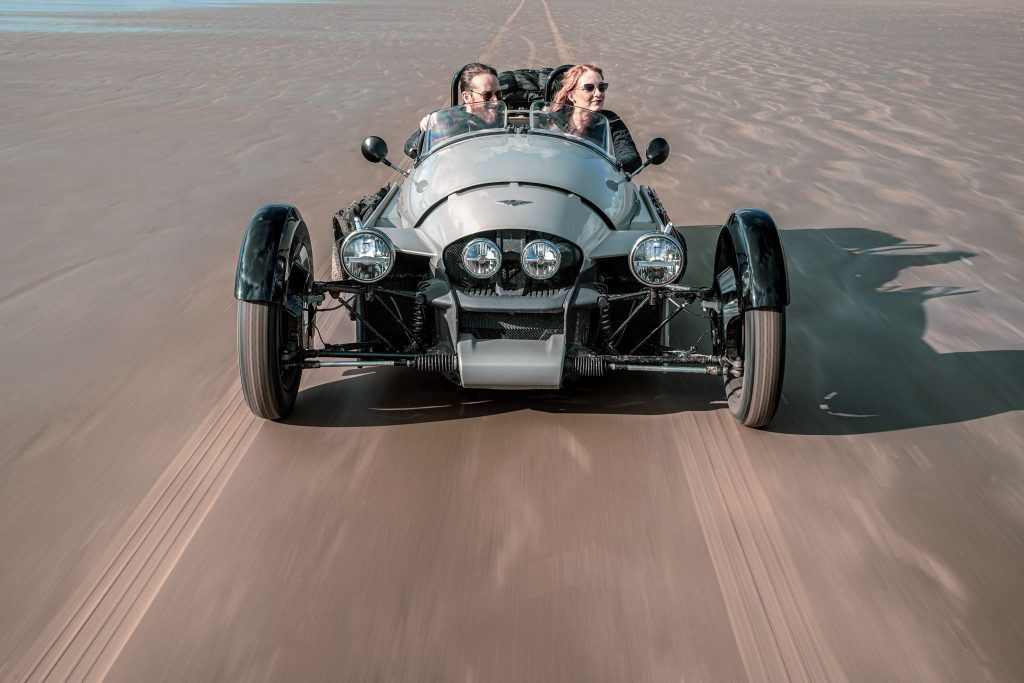
Another eye-catching exterior feature is the Super 3’s solid 20-inch front wheel faces, which are wrapped in bespoke Avon tyres. The wheel faces were inspired by mid-20th century salt-flat racers, and their positive offset means that the car could be fitted with longer suspension wishbones and have its brakes mounted further apart. This enhances brake cooling and provides optimal front-suspension geometry.
The Super 3’s interior has also received a thorough overhaul. The middle of the dashboard is dominated by two large, aviation-style instrument housings that contain digital displays – a first for the brand. The exposed nature of the cabin is now more durable thanks to IP64-rated dust- and water-ingress protection, which even includes the USB outlets.
Attention has also been paid to the car’s main touch points. The majority of the switchgear is made from knurled metal – as is the indicator stalk, which intriguingly sits proud of the bodywork. A thin, triple-spoke leather steering wheel and polished metal gearlever and handbrake tie everything together.
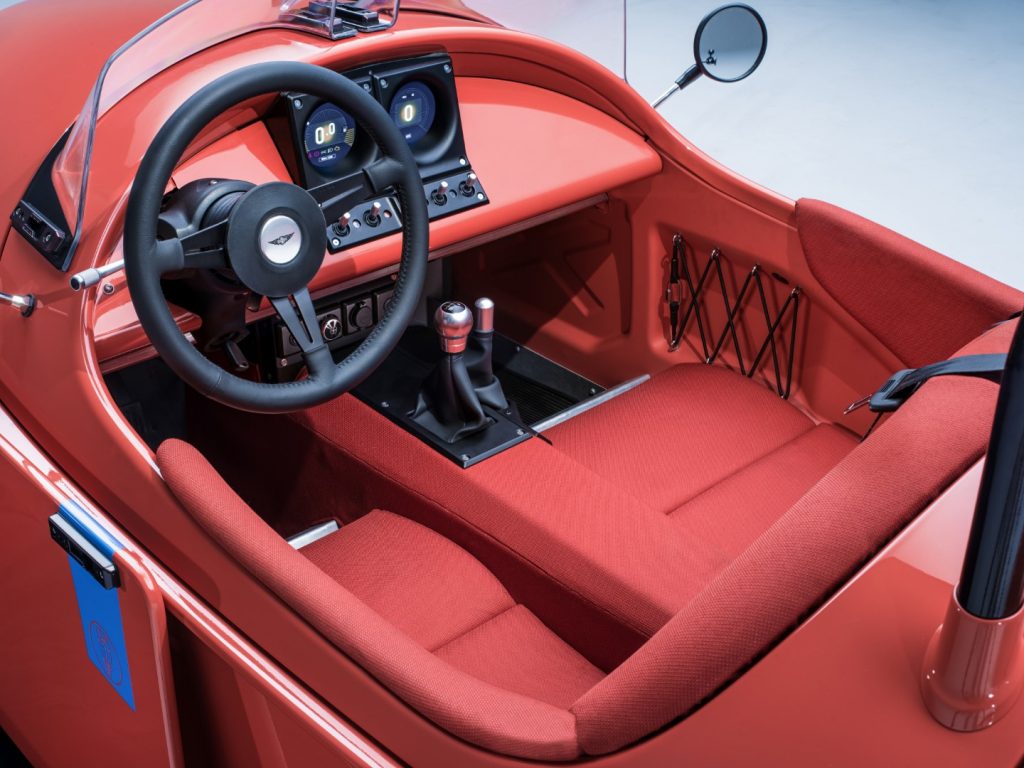
The interior is also just as customisable as the body, and forms part of the company’s list of 200 options. So, as with the custom liveries of the exterior, it can be built to a customer’s exact specifications and has plenty of mounting points for wind deflectors, sat-navs, mirrors, toolboxes and screens.
Malvern is set to begin Super 3 production in April ahead of first deliveries in July. Only one model is offered, although it can be configured in different themes such as Adventure, Touring, Contemporary and Classic to help guide buyers through the extensive options list. Prices start at £41,995 in the UK, and cars can be specced via an online configurator.

